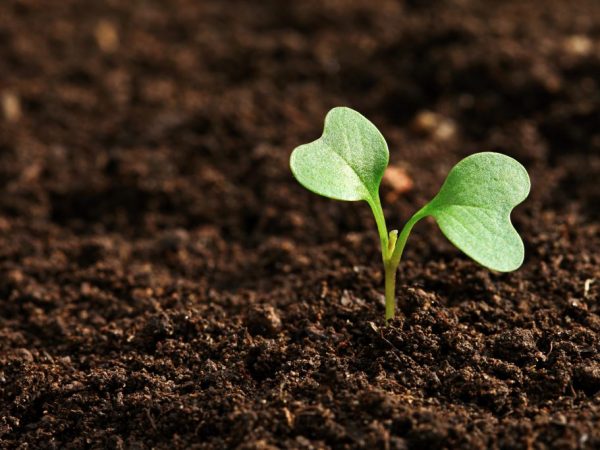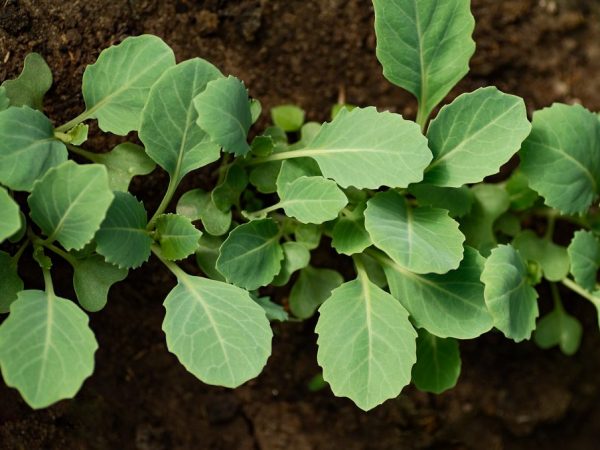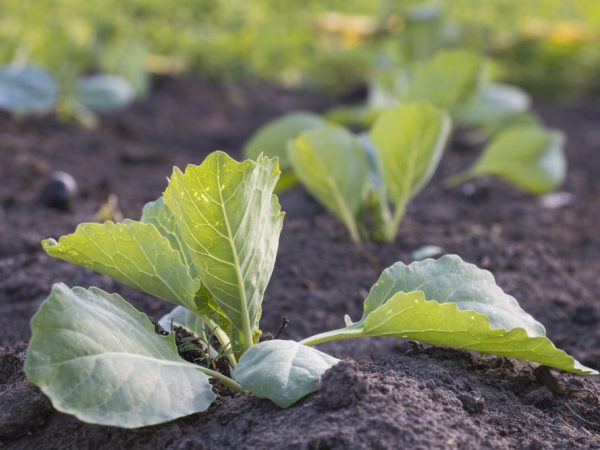Planting cabbage seedlings in Siberia
Cabbage seedlings in Siberia are grown a little differently than in other regions. This is due to climatic features: the length of daylight hours and daily temperature fluctuations. The late onset of summer and its short-term nature make its own adjustments to the process.

Planting cabbage seedlings in Siberia
Selection of varieties
Severe weather conditions are not an obstacle for growing any types of cabbage in the open field in Siberia, but to get a generous harvest of this vegetable, you must follow some rules. First, the most suitable varieties are selected.
As the research of breeders shows, almost all varieties of vegetables are suitable for growing in the short Siberian summer, but cabbage plants will give the best yields:
- white cabbage;
- Savoyard;
- redhead.
Some gardeners manage to grow quite large yields of Peking cabbage, as well as kohlrabi and broccoli.
The most suitable varieties and hybrids of the white-headed variety for the regions of Siberia are those that are distinguished by early ripening and frost resistance. Among them are:
- Early ripening: Golden hectare, Number one polar K-206.
- Mid-season: Slava 1305, Siberian 60, Slava Altayskaya 157, Belorusskaya 455, Cyclone-F1, Severina-F
- Late: Gift, Lebyazhenskaya improved, Snow White, Severyanka-F
Most often, summer residents of Siberia sow seeds of mid-season cabbage varieties, fearing freezing of early and late plants. This can be avoided by sowing the seeds at the right time.
Transplanting

We process seedlings
Growing cabbage for seedlings in Siberia begins with sowing seeds in boxes, pots or single peat glasses. For each variety of plants, the approximate dates for sowing seeds are observed.
Seeds of early maturing varieties of white and red cabbage are planted in the ground in the first decade of March. Plants that can be harvested in mid-summer are sown in the second half of April, and late-ripening vegetable seeds are sown from March 20 to April 10.
Soil preparation
Prepare the soil before sowing cabbage seeds for seedlings. It is important to do this on time, because the soil should warm up well before planting the seeds.
Sowing the seeds of a plant grown in a seedless way (broccoli and Peking) is carried out only after the ground temperature reaches 5 ° C. You can determine this time by looking at a thermometer that measures the temperature of the atmospheric air, and then subtract the number 7. The difference will be the temperature of the earth at a depth of 15 cm.
The ground in greenhouses is watered with potassium permanganate and covered with oilcloth. It is advisable to leave the coating for 3 days. After that, it is lifted and the operation is repeated.
Selection and sowing of seeds
Before sowing seeds, pre-sowing treatment is performed. Sowing cabbage is recommended only after culling small seeds.Also, many summer residents recommend soaking the grains in a weak solution of potassium permanganate (potassium permanganate). Seeds that do not have strong embryos inside, also have flaws that are invisible to the eye, will surely float to the surface. Rejected seeds should be collected and disposed of.
After that, they recommend:
- place the grains in water with a temperature of 5 ° C for 20 minutes;
- strain the liquid, and put the seeds in the freezer for 10 minutes;
- prepare a nutritious liquid with a growth stimulator, place the seeds in a container and leave to swell for 12 hours;
- drain the water and wrap the grains in a cotton cloth, then send the bundle to the refrigerator for a day.
After such treatment, the time from sowing to germination is reduced, and strong shoots germinate from the seeds. Vegetable seeds of any variety, including broccoli and colored, are treated in a similar way.
The depth of planting any kind of cabbage into the ground is 1 cm. If you deepen the seed, the first sprouts will break through to the surface for more than a week.
To speed up the appearance of the first leaves, the greenhouse is watered abundantly on the day of sowing, and then the oilcloth is fixed on it. This allows you not only to keep warm, but also to let in sunlight.
Landing in the ground

Seedling adaptation
Cabbage is planted in the ground when the seedlings reach a certain age. This period is different for different types of seedlings:
- for early varieties - 60 days;
- for mid-ripening - 40 days;
- for late - at least 35 days.
You should also take into account the time that must elapse from the moment of germination to full maturation. Based on this, it is recommended to plant early varieties and hybrids from April 25 to May 15, medium ones from May 15 to June 15, and late ones from June 1 to 10.
After transplanting, the plants will hurt for about a week. The leaves can wither on them, and the seedlings themselves can bend to the ground. During the adaptation period, seedlings need special care and attention.
Plants should be planted in a permanent place as follows:
- Prepare a bed of suitable size in the evening. The calculation is based on the fact that the distance between the roots of early varieties should be at least 40 cm, and of late and middle varieties - about 50 cm. The best planting method is the square-nesting method.
- The wells must be watered with a weak solution of potassium permanganate.
- The plant is dug out of the box or released from the cup. It is important not to damage the clod of earth, otherwise the plant will suffer.
- Place the seedling in the hole and slightly deepen it, sprinkling it with earth. The earth should not be allowed to fall into the leaf outlet, otherwise the plant will not survive. If this happens, the pollution is removed as soon as possible.
- The seedlings are watered with warm, settled water, and then the holes are sprinkled with soft dry earth.
The next day after planting, the plants must be watered and again the bare places of cabbage stalks are covered with dry earth. To reduce the risk of spoilage, only strong bushes are planted after transplanting. All sick and delicate plants are thrown away.
Care
Shrub protection
It is important to keep plants out of direct sunlight. If night frosts are predicted, the seedlings are covered with cans or agrofibre. If neither one nor the other is at hand, the plants are protected with tree branches with blossoming leaves. The fence should be thick, and its height should be about 1.5 times higher than the bushes themselves.
Loosening
Rooted plants need hilling and frequent loosening of the soil. Such maintenance techniques will help the vegetable develop a powerful root system. Some gardeners advise mulching the soil. This can be done only if there are no snails on the site. Otherwise, slugs will definitely settle in a damp place.
Watering
Seedlings planted in open ground are regularly and abundantly watered. It is important to irrigate not only the hole, but also the entire surface of the garden.You can use a spinner, but this device is best used in the evening: during the night, the cabbage leaves will dry out, so the bright rays of the sun will not be able to burn them through the drops of water.
Top dressing
Fertilizing cabbage seedlings should be done regularly. The first feeding of the planted cabbage seedlings is carried out only 2 weeks after planting. Be sure to wait for the plants to take root and release a new leaf. Until that time, the seedlings have enough minerals in the soil. The best fertilizer for young plants is humate or infusion of cow dung, diluted with water in a ratio of 1 to 10.
Features of growing some varieties of cabbage
Some varieties of cabbage are very finicky. They do not tolerate picking due to a weak root system. Gardeners note that Brussels sprouts and Peking cabbage are most susceptible to spoilage.
Saplings of these varieties of leafy vegetables practically do not take root after transplanting, so their seeds are sown directly into the holes. Sowing sites are insulated before the first shoots with the help of spandbond or oilcloth domes. Also, the wells are covered with inverted glass jars.
In the climatic conditions of Siberia, it is difficult to grow cauliflower. This vegetable is very sensitive to temperature changes. A lot of light is needed for the plant to form a beautiful ovary and develop it to the desired size. A good harvest of this type of cabbage is obtained only if the seedlings are planted in a permanent place at a suitable age. When choosing a place for planting seedlings, preference is given to chernozems. Depleted soils before planting cauliflower are fertilized with humus or chemical fertilizers with a high nitrogen content. Plants at the time of transplantation must reach 55 days.
Disease Prevention and Pest Control
The worst enemies of cabbage beds are:
- slugs;
- cabbage butterfly and its caterpillars;
- cruciferous flea.
The best way to get rid of flying pests is with insecticide treatments.
In the fight against creeping parasites, you can cope with folk methods. Slugs and snails survive with ground red hot pepper: they are sprinkled with holes and aisles. The space between the plants is watered with salt water. For 10 liters of water, no more than 200 g of table salt is used.
Conclusion
A vegetable garden in Siberia is capable of producing high yields of all kinds of vegetables. True, few of them can be grown outdoors. Cabbage is an exception, but it is important not to miss the moment of planting it.
Healthy seedlings are the key to excellent harvesting. It is possible to grow it in a long winter if you follow the rules and take into account the characteristics of the region, as well as choose the right varieties and hybrids.


